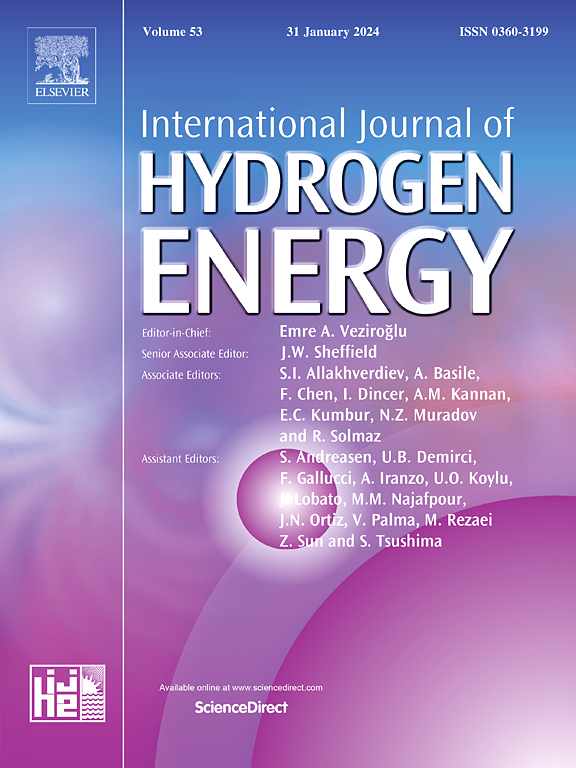在 CdS 光阳极上负载低成本、高附着力的柔性聚(邻苯二酚/多胺)半导体,促进光电化学水分离
IF 8.1
2区 工程技术
Q1 CHEMISTRY, PHYSICAL
引用次数: 0
摘要
本文章由计算机程序翻译,如有差异,请以英文原文为准。

Low-cost excellent-adhesion flexible poly(Catechol/Polyamine) semiconductor loaded on CdS photoanode for promoting photoelectrochemical water splitting
Organic semiconductor photoanodes have gained significant interest for use in photoelectrochemical (PEC) water splitting systems, enabling the conversion of solar energy into hydrogen. In this study, we utilized a cost-effective, highly adhesive flexible poly(Catechol/Polyamine) (PCPA) semiconductor, which forms strong coordinate bonds to enhance electron transfer and serves as a passivation layer. This PCPA was applied to the CdS photoanode surface using a simplified self-aggregation method at ambient temperature and pressure. At the same time, NiOOH was also used as a hole transport agent to mitigate the self-corrosion of CdS. The CdS/2PCPA/NiOOH photoanode achieved a peak photocurrent density of 3.61 mA/cm2 at 1.23 V vs. RHE, exceeding the values of the CdS/2PCPA (1.75 mA/cm2) and CdS (0.75 mA/cm2) photoanodes by factors of 2 and 4.8, respectively. This research presents a novel approach for developing an economical, environmentally friendly, and stable photoanode for PEC water splitting.
求助全文
通过发布文献求助,成功后即可免费获取论文全文。
去求助
来源期刊

International Journal of Hydrogen Energy
工程技术-环境科学
CiteScore
13.50
自引率
25.00%
发文量
3502
审稿时长
60 days
期刊介绍:
The objective of the International Journal of Hydrogen Energy is to facilitate the exchange of new ideas, technological advancements, and research findings in the field of Hydrogen Energy among scientists and engineers worldwide. This journal showcases original research, both analytical and experimental, covering various aspects of Hydrogen Energy. These include production, storage, transmission, utilization, enabling technologies, environmental impact, economic considerations, and global perspectives on hydrogen and its carriers such as NH3, CH4, alcohols, etc.
The utilization aspect encompasses various methods such as thermochemical (combustion), photochemical, electrochemical (fuel cells), and nuclear conversion of hydrogen, hydrogen isotopes, and hydrogen carriers into thermal, mechanical, and electrical energies. The applications of these energies can be found in transportation (including aerospace), industrial, commercial, and residential sectors.
 求助内容:
求助内容: 应助结果提醒方式:
应助结果提醒方式:


